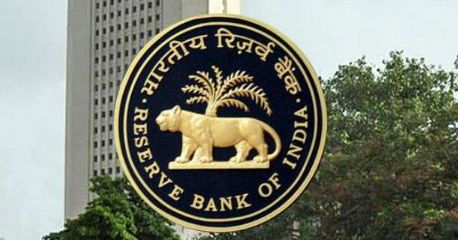The financial inclusion drive in the country is now supported by a benchmark. The Reserve Bank of India (RBI) has launched a “Financial Inclusion Index” or FI-Index to measure and improve the extent of access, usage and quality of financial inclusion in the country.
The index will track the financial inclusiveness of people, especially those who are not part of the banking system, small depositors in the banking and postal system, micro investors, pensioners and others. The idea behind the index is to ensure financial empowerment
WHAT IS THE PURPOSE OF THE INDEX?
The Financial Inclusion Index (FI- Index) aims to capture the extent of financial inclusion across the country. It has been conceptualised as a comprehensive index, incorporating details of banking, investments, insurance, postal as well as the pension sector in consultation with the government and respective sectoral regulators.
The FI-Index will be published annually in July every year.
For starters, the RBI said between March 2017 and March 2021, the FI-Index or simply the financial inclusion quantity and quality improved by 10 per cent.
The index will capture information on various aspects of financial inclusion in a single value ranging between 0 and 100, wherein value 0 will represent complete financial exclusion and 100 would indicate full financial inclusion.
PARAMETERS OF FI-INDEX
According to the central bank, the FI-Index comprises three parameters — access, usage and quality.
Access to financial institutions would carry a weight of 35 per cent, usage 45 per cent and quality 20 per cent. Each of these parameters will consist of various dimensions, which are computed based on a number of indicators.
The index will be responsive to ease of access, availability and usage of services, and quality of services, comprising in all 97 indicators.
RBI said a unique feature of the index is the quality parameter which captures the quality aspect of financial inclusion as reflected by financial literacy, consumer protection, and inequalities and deficiencies in services.
The FI-Index comes without any ‘base year’ and it reflects cumulative efforts of all stakeholders over the years towards financial inclusion.
RBI ON FI-INDEX
The RBI had announced its plans to set up an FI-Index on April 7 in its ‘Developmental and Regulatory Policies’ in the first bi-monthly Monetary Policy Statement for 2021-2022.
At an earlier event, RBI Governor Shaktikanta Das, said, “The index will have parameters across the three dimensions of financial inclusion. Work on FI Index is underway and the Index will be published shortly by the RBI.”
Underlining the significance of the FI-Index, he said, “In India, the second wave of the pandemic has taken a grievous toll both in terms of lives and livelihood.”
“The recovery that had commenced in the second half of 2020-21 was dented by the second wave of the pandemic in April-May 2021. Our efforts towards financial inclusion, have helped in enabling the Government to provide seamless and timely financial support to vulnerable sections through direct benefit transfers (DBT),” he added.
Shaktikanta Das said the wider adoption of digital payments is reflected by the number of prepaid payment instruments (PPI) issued as smart cards, internet accounts, online wallets, mobile accounts, mobile wallets and others to access the prepaid amount.
Usage of PPI increased at a compounded annual growth rate (CAGR) of 53 per cent from 41 crores in May 2017 to 226 crores in May 2021, as per RBI. In May 2021, 91 per cent of PPIs was in the form of wallets and the rest in the form of cards.
Das said, “The digital payment regime has grown since the introduction of fast payment systems, such as Immediate Payment Service (IMPS) and Unified Payment Interface (UPI), which provide immediate credit to beneficiaries and are available round the clock.”
According to RBI data in June 2021, each day on average, the payment systems in India processed more than 15 crore transactions amounting to nearly Rs 4.5 lakh crore per day.
The UPI platform facilitating payment transactions through smartphones witnessed over 280 crore transactions in June 2021.]
DIGITAL FOOTPRINT & FINANCIAL INCLUSION
The RBI said digital footprint as a sign of financial inclusion has managed to reduce the stress caused by the pandemic. This has been indicated by the Aadhaar-enabled Payments System (AePS) that facilitates fund transfers/payments and cash withdrawals through micro-ATMs and Business Correspondents (BCs) using Aadhaar authentication proved critical.
During the pandemic, cash transactions at BC outlets through micro-ATMs witnessed a significant surge with more than 94 crore transactions accounting for Rs 2.25 lakh crore during 2020-21.
Aadhaar, the world’s largest biometric identity facilitated financial inclusion through innovative digital platforms during the pandemic.
The NACH-Aadhaar Payments Bridge (APB) System and PMJDY together were instrumental in enabling an effective usage of available banking facilities for ordinary people. During the pandemic, these facilitated cash benefits under Pradhan Mantri Garib Kalyan Yojana, helping disbursement to 42.59 crore PMJDY account holders. Of these more than 55 per cent of account holders are women.
RBI said Rs 5.53 lakh crore was transferred digitally across 319 government schemes during the pandemic, spread over 54 ministries.
STEPS TO IMPROVE FINANCIAL INCLUSION
Financial inclusion has been a key agenda of the central government. In 2014, nearly 50 per cent of Indians had a bank account.
The Jan Dhan Yojana, launched on August 15, 2014, offered unbanked persons easy access to banking services and increased awareness about financial products along with a RuPay debit card, in-built accident insurance cover of Rs 2 lakh and facilitated access to overdraft facility upon satisfactory operation of account or credit history of six months.
By March 2021, the total number of PMJDY accounts increased to 42 crores. According to the latest data, the beneficiaries had deposits of Rs 1.39 lakh crore. Of the 42 crore account holders, including the poorest living in the remotest parts of the country, nearly 31 crores had availed RuPay cards.
To promote financial inclusion, the central bank has set up a pilot project in association with banks under which at least one district in each State/UT would be 100 per cent digitally enabled.
The project was started in 2019 to initially cover 42 districts. According to Shaktikanta Das, it will facilitate greater access and usage of digital payments by the common man. As on March 2021, banks achieved a digital coverage of 95.9 per cent of individuals and 89.8 per cent for businesses.



































